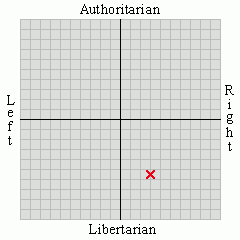Our government is drowning in debt and that means we have to tighten our belts. Very few people are talking about how or where to cut Federal spending, though. And in any discussion of the appropriate size and role of the Federal government -- such as is going on across the right-of-center blogosphere now -- a fair discussion requires a good understanding of what it is that the government spends our money on. And the single biggest program in the Federal government is Social Security.
There, that fell with a thud, didn't it?
No one wants to do anything about Social Security. It's rightly called the "third rail" of American politics; George W. Bush tried to suggest a partial privatization as an idea, and got burned badly by it. Everyone else who's even mentioned anything other than "protecting" it has been spanked at the polls. Congress is so afraid of doing anything to it that it puts Social Security "off-budget," meaning that we don't even see the tax collection and benefit distribution in most analyses of the budget. But that is just smoke and mirrors by Federal accountants (who, to be fair, are only complying with laws Congress passed requiring that they not include it).
Just in case you didn't know, there is no "lockbox." There is no "trust fund." There never was. Benefits paid today are funded by taxes collected today. And when the taxes collected today run out, the remainder of the benefits are paid for by government debt, in the form of T-bills that are issued today. And demographics are not on the side of the system; the system was designed to give a nice benefit to people who retired for a few years before they died, in anticipation of them dying (and thus going off the benefit rolls) about five years after they stopped working, with many more active, younger workers supporting the older, retired benefit recipients. The target ratio was 10 workers to one retiree, creating a net influx of cash into the Federal tax coffers (to subsidize other governmental activities). But by 2020, the ratio of retired benefit recipients to active, younger workers paying taxes into the system will be 1:1 and will continue to decline from there, with recipients living fifteen to twenty years after retirement.
And the reason that reform of Social Security is so politically awful is that there are absolutely no good ways to do it. There are exactly two ways to do it -- 1) increase taxes, or 2) restrict the benefits. Under the current system, taxes can be increased in one of two ways: 1(A) increase employment taxes, or 1(B) increase income taxes; and benefits can be restricted in one of two ways 2(A) pay Social Security recipients less money, or 2(B) increase the age at which one becomes eligible for retirement benefits. That's it -- there are no other tricks, no other ways to solve the problem. You can blend multiple elements of these ideas, in varying amounts, but those are the only options.
So it's oddly welcome news to see that this year, for what seems like the first time ever, Social Security will not be indexing up its benefits for cost-of-living adjustments. Effectively, this is a reduction in benefits, option 2(A). Unfortunately, this first-ever reduction in benefits will be accompanied by about another $13 billion "supplemental stimulus" payments, in the form of a special $250-per-recipient check. Seniors relying on Social Security will therefore get a "bonus" of $250 but miss out on cost of living adjustments on the benefits they have based their retirement budgets on -- just as we move into what promises to be an inflationary period of the economy. Not exactly "change you can believe in," is it?
Meaningful reform, however, will involve more than sugar-coating incremental indexing out of the coming tsunami of entitlement obligations. If anything, this step will teach the Feds a way to further defer addressing the real problem.
October 15, 2009
Subscribe to:
Post Comments (Atom)







No comments:
Post a Comment